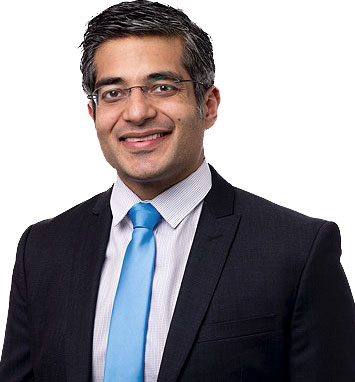So you finally made the decision and went for the tummy tuck surgery, endured the drains and all the complications that come along, only to wonder, “What if the unwanted tummy fat comes back?”. Well, it’s not uncommon to feel this way. You may be worried about the loose skin, scars darkening and the muscles drifting apart, again. But the good news is that all this does not happen if you follow a proper, healthy routine. In this blog, we will share some practical habits that can help you achieve and maintain a flatter waist for good.
Why Results Can Slip Away ( How to Stop It)
Post-tummy tuck outcomes depend heavily on aftercare. Skin laxity, scar formation, and muscle integrity remain dynamic long after surgery. Poor nutrition, inadequate activity, or improper wound care can undermine even the most precise procedure. But with the right maintenance, your results only get better over time:
- Weight fluctuations pull skin and muscle like a rubber band, risking stretch-back and reopened diastasis. Aim to stay within 5–10 lbs of your post-op weight, track progress weekly, and rely on balanced meals rather than crash diets.
- Neglected scar care can result in an incision that is raised, thick, or discolored. Use silicone sheets or gel for the first six months, moisturize daily, and keep the scar out of the sun (use SPF 30+).
- Rushing into high-intensity workouts strains fresh repairs and can cause fluid buildup. Follow your surgeon’s staged return-to-exercise plan: start with walking, add low-impact cardio at weeks 5–6, and wait for medical clearance before beginning core training.

Move Wisely, Recover Stronger
A tummy tuck thrives on balance: too little movement slows recovery, but too much too soon can sabotage your results. Think of activity as a dimmer switch, not an on-off button. Gradually increase the intensity as your body heals, allowing swelling to fade and strength to return. Listen to your body.
- Weeks 1–2: Slow laps around the living room keep blood flowing without stressing stitches.
- Weeks 3–4: Add longer walks or gentle stationary biking; anything that spikes your heart rate is still off-limits.
- Weeks 5–8: Light strength work for arms and legs; core muscles stay on vacation.
- After Surgeon Clearance (usually ~10 weeks): Introduce planks, bird-dogs, and low-resistance Pilates before graduating to crunches or weighted moves.
Wear the Right Support Early On
A medical-grade compression binder is a crucial component of early recovery. It limits swelling, supports muscle repair, and helps the incision edges stay firmly in place.
- Duration: Plan to wear the binder 24/7 for the first 2 – 3 weeks, removing it only for brief showers. Your surgeon will let you know when it’s safe to switch to lighter shapewear or discontinue support altogether.
- Fit check: The garment should feel snug but never painful or restrictive. Numbness, tingling, or difficulty breathing are signs it’s too tight—contact the clinic if adjustments don’t help.
- Hygiene: Replace damp or sweaty binders with a clean one to prevent skin irritation and reduce the risk of infection.
- Travel reminder: Keep the binder on during long flights or car rides, when fluid can pool in the abdomen.
Consistent use of proper support during this short window promotes smoother contours and a more comfortable, reliable healing process.

Guard Your Investment with Smart Lifestyle Choices
A tummy tuck gives you a head start, but everyday habits still decide how long the results last. The following choices are simple to follow and make a big difference over time:
- Avoid or reduce smoking: Nicotine narrows blood vessels, slows collagen production, and can cause scars to widen.
- Make sleep a priority: Seven to nine hours each night balances appetite hormones and helps keep your weight steady.
- Keep stress in check: High stress raises cortisol, which encourages belly-fat storage. Daily walks, brief meditation, or gentle yoga can help lower those levels.
Plan Ahead for Pregnancy or Major Weight Loss
If you’re considering having more children or expecting a significant weight change, timing matters. Pregnancy can stretch the skin and reopen the muscles that were repaired during a tummy tuck, while significant weight fluctuations may loosen the skin again. Consider postponing surgery—or setting aside funds for a small touch-up later—until you’re confident your family plans and target weight are stable.
Regular Check-Ins With Your Surgeon
Regular follow-up visits allow your surgical team to monitor healing, fine-tune scar care, and catch minor concerns before they become bigger issues. A typical schedule might include an early check at one month, a progress review around three to six months, and an annual visit thereafter. Treat these appointments as non-negotiable; timely adjustments and professional advice help preserve your tummy-tuck results for the long term.

Final Thoughts
A tummy tuck can give you a flatter abdomen, but maintaining that result is a daily commitment. Regular exercise, stable weight, follow-up appointments, and healthy lifestyle choices all work together to preserve your new shape. Follow these basics consistently and you are more likely to keep your improved contour for years to come.
Ready to Protect Your Investment?
If you have questions about long-term maintenance or are considering a tummy tuck in Seattle, call (206) 209-0988or click here toschedule a consultation with Allure Esthetic and receive individualized guidance from Dr. Sajan and his team.
 FeminizationSurgeries.com
FeminizationSurgeries.com
